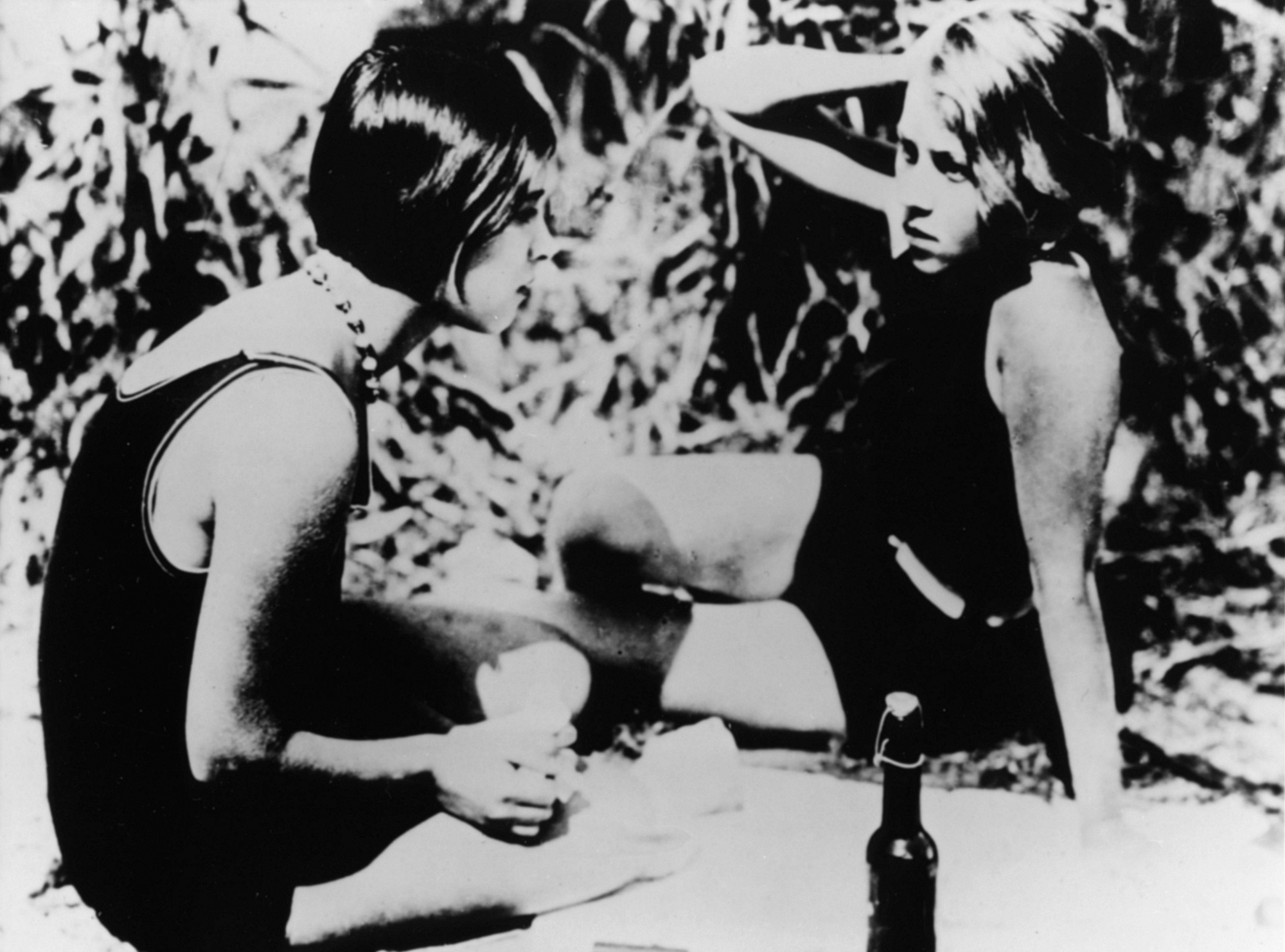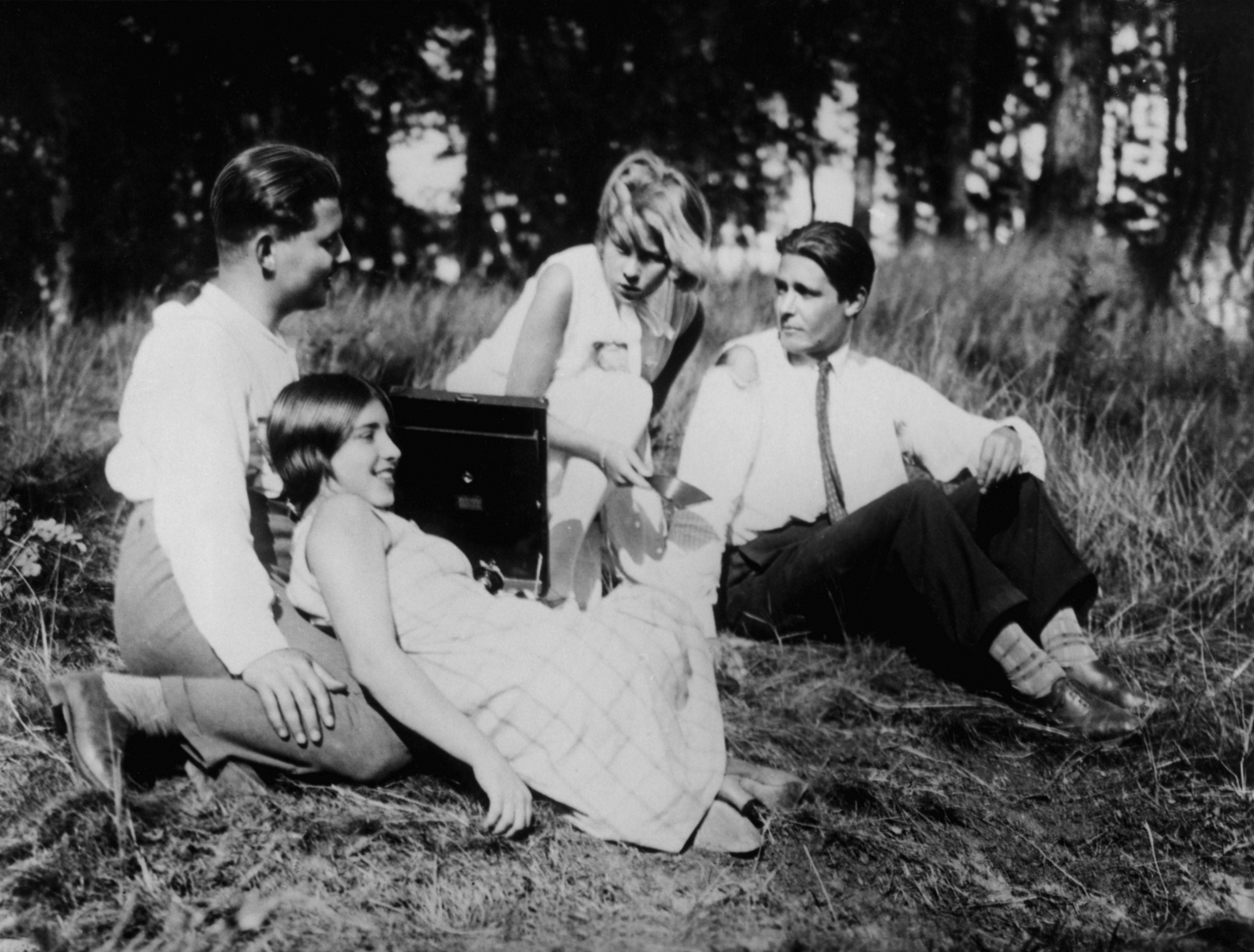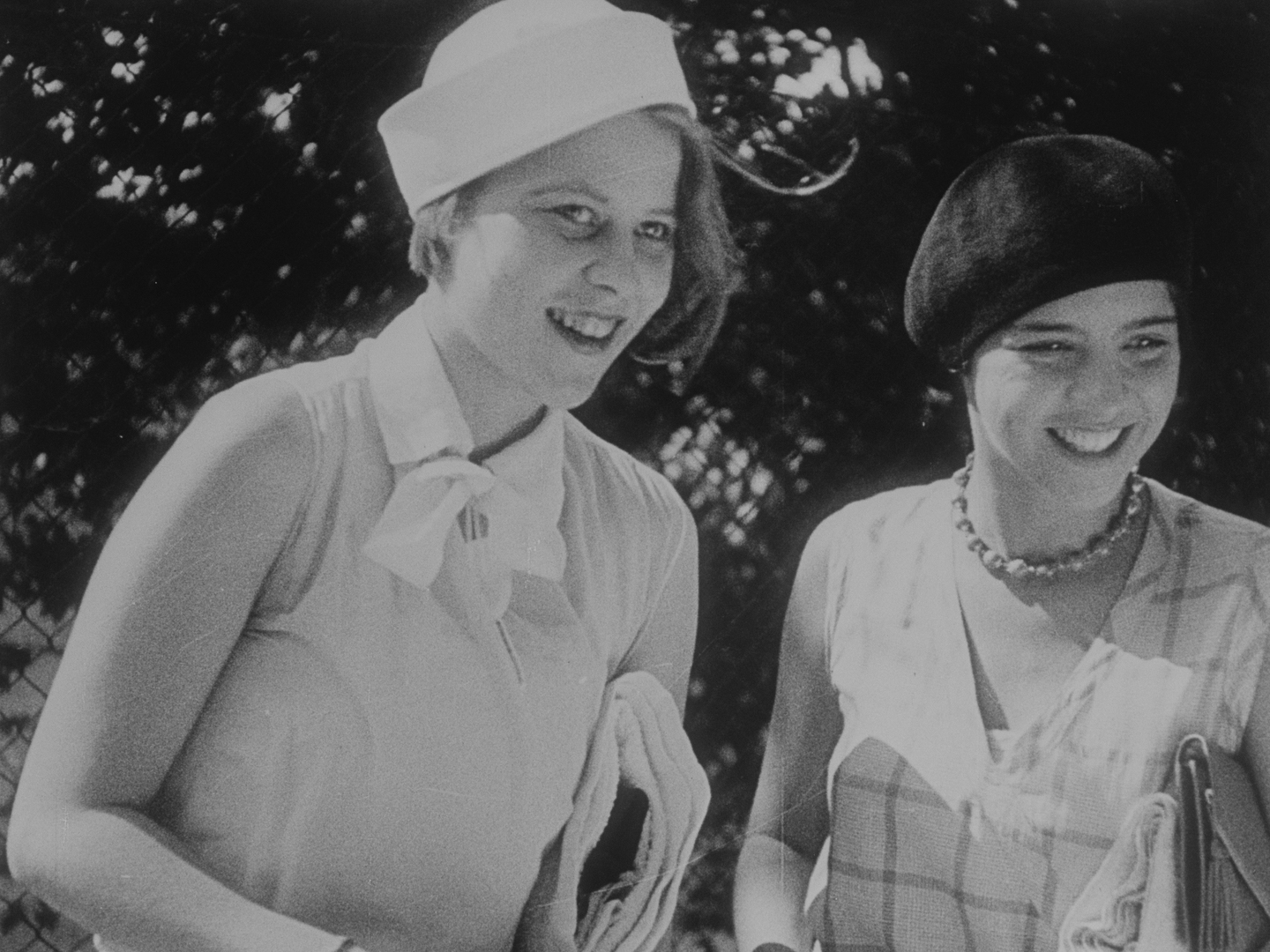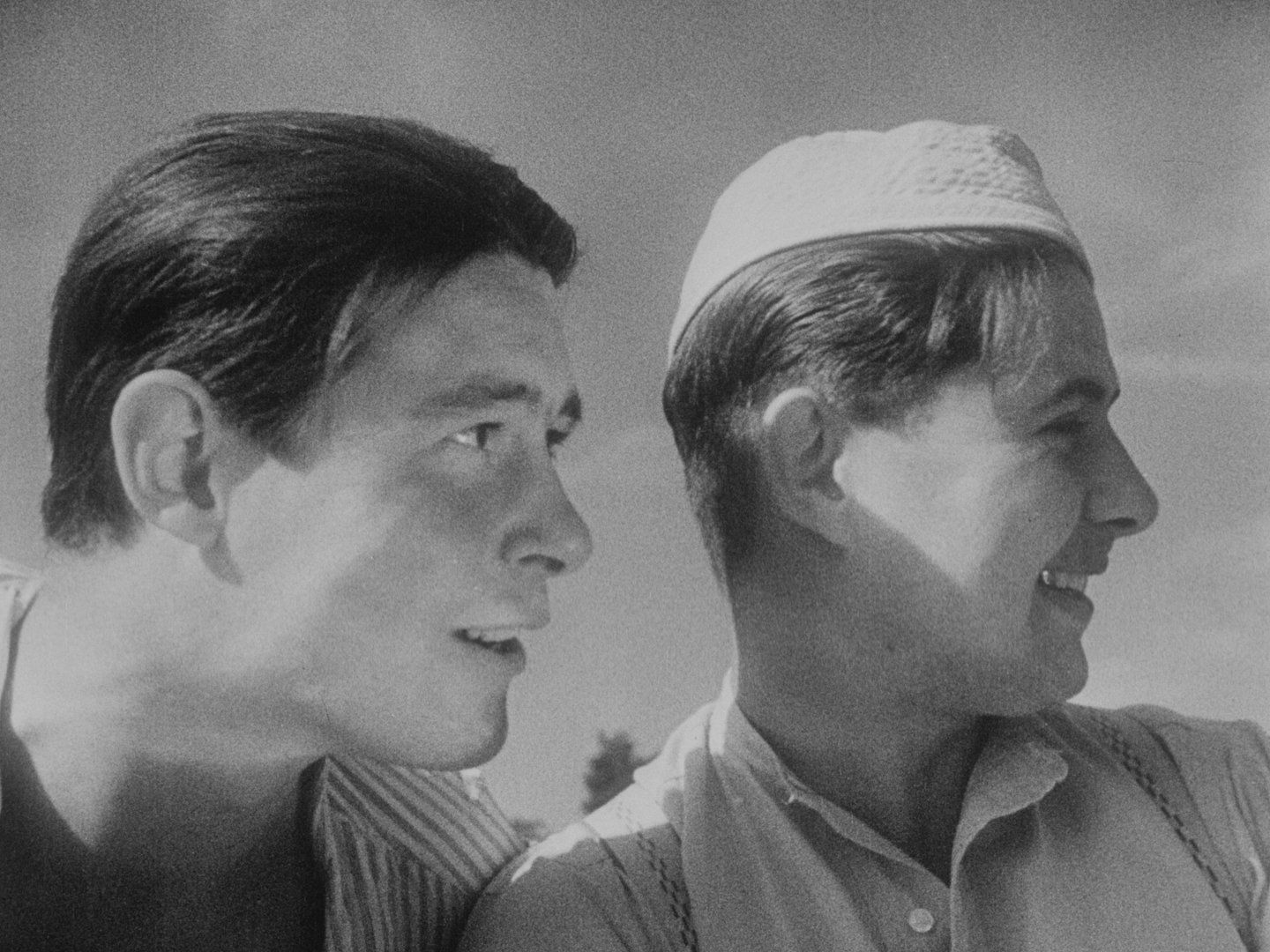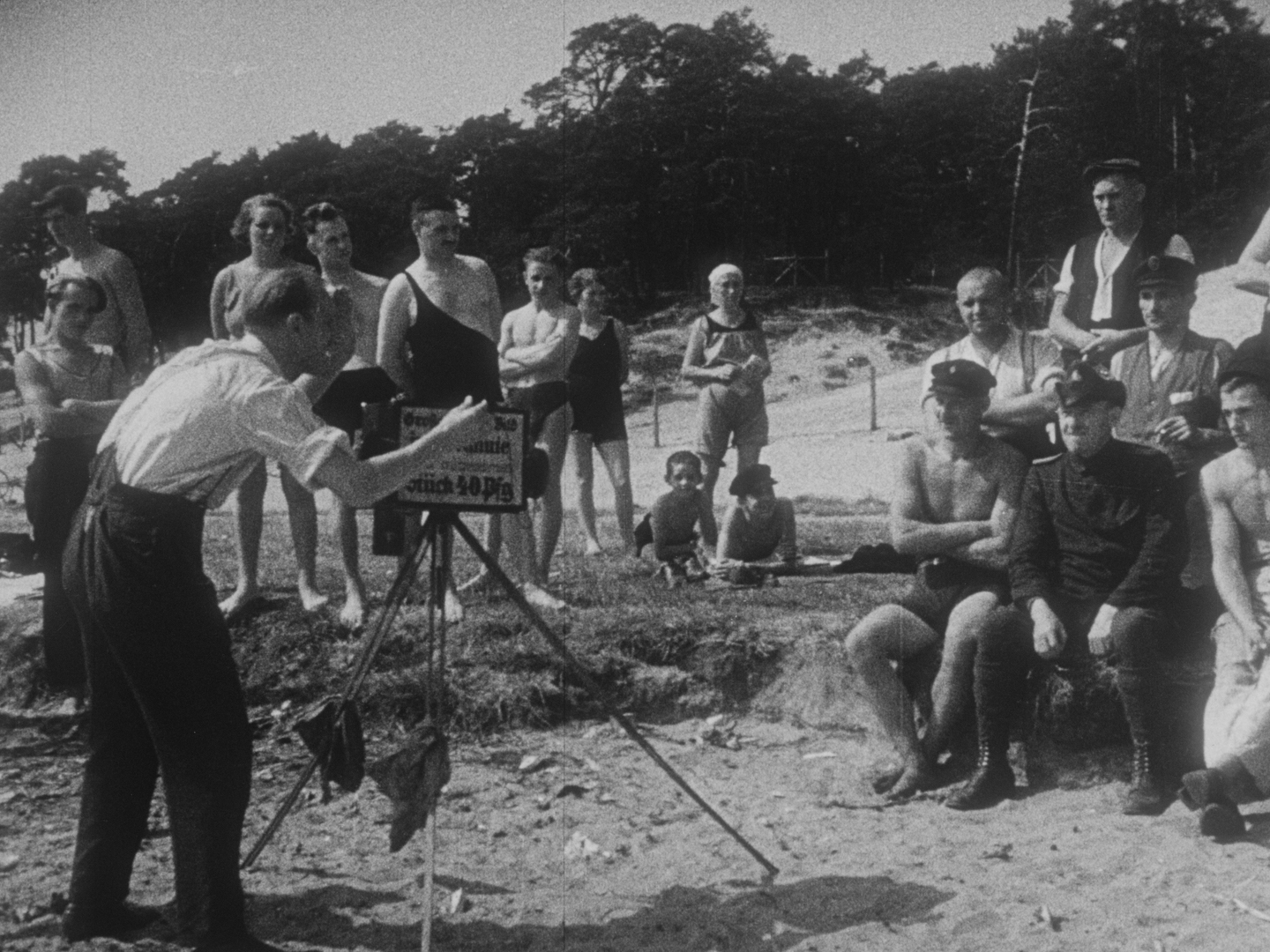Menschen am Sonntag
Menschen am Sonntag
DE, 1930, 72 Minutes | HD-b/w-restored version
HIER KOMM INTRO TEXT
The young traveler Wolfgang makes the acquaintance of Christl, an extra. A Sunday outing is soon arranged. Erwin and Annie, good acquaintances and friends of Wolfgang, will also be part of the party. They meet at the Nikolassee train station. But Annie oversleeps the train. However, good advice is not expensive. Christl has brought a friend, the blonde Brigitte. So one is complete. Soon the merry company is in the water. A suitcase gramophone plays. Seductive. From the small pastry shop. The sun is burning. Noon. Wolfgang noticeably turns his sympathies to little Brigitte. She is blond! And incredibly young! Fat Erwin cannot console Christl. Wolfgang and Brigitte are gone for a long time. But Brigitte's happiness will not last either. A summer day's happiness. The next Sunday, the boys go to soccer. Wolfgang will hardly show up for the rendezvous with little Brigitte.
In the summer of 1929, a group of young film enthusiasts shoots a film on the streets of Berlin, improvising the script between takes at the coffee house table. They are the filmmakers Robert and Curt Siodmak, little known at the time, as well as Fred Zinnemann and Billy Wilder. The film shows five young amateur actors from Berlin - Christl, Wolfgang, Annie, Brigitte and Erwin - who arrange to go on a Sunday outing to the Wannsee lido. There is bathing hustle and bustle and a colorful mess, in between potato salad and hot sausages. A photographer shoots souvenir pictures for everyone, cameo appearances by director Kurt Gerron and dancer Valeska Gert. Staging and documentary images of this early example of an independent film combine to create a modern snapshot: views from the city train, a gentleman feasting his eyes on the monument to the "Great Elector", strollers accompanying a music corps in step. Still lifes of gravestones of a stonemason and neglected backyards. The premiere on February 4, 1930 at the Union Theater UT Kurfürstendamm was a surprise success and marked the beginning of the young filmmakers' world career.
The film was restored in 2014 by the Deutsche Kinemathek in collaboration with EYE Filminstituut Nederland. In 2021, trombonist and composer Uwe Dierksen wrote a new ensemble music commissioned by the Friedrich Wilhelm Murnau-Gesellschaft Bielefeld, which was premiered at the Film+MusikFest Bielefeld on Oct. 22, 2021.
Uwe Dierksen about his music:
My music is oriented towards the harmonically complex music of a Kurt Weill or Hanns Eisler. The basic mood is an entertaining- melancholic one: common hits of the twenties are not quoted, but are present in their gesture, because I invent melodies and harmonies that sound similar, but are never, I hope, overwrought. Moreover, the view from the twenty-first century urges a wise penetration and an abstract attitude towards the choice of musical means, because, of course, the general reception of music has changed considerably since the twenties. If in this sense a thread of narrative light-heartedness runs through the film, this basic framework then allows me to deviate from it all the more and to weave in passages in which the character changes completely. The leaking faucet, for example, becomes the beat and melody generator for the entire scene, which takes place in the apartment of the cab driver with his girlfriend.
I even take the liberty of composing a little "musique concrete" here, in which I make the aforementioned dripping of the faucet, the creaking of the closet door, the ticking of the grandfather clock, the rustling of the newspaper, etc. into musical protagonists, thus giving a musical identity to the everyday noises. In order to make the longing of people's longing for Sunday, music must find a language for the bleakness of everyday life, or for the mundane (see also Siegfried Kracauer: "Die Angestellten" ). In addition, such music is important to describe the ambivalence of the relationship qualities between the characters: on the one hand Kurt Siodmak shows his actors very emotional and warm-hearted, on the other hand he also remains, especially through the camera work of camera work of Eugen Schüfftan, he remains distant and observant: somehow no relationship seems to really work. work. I treat certain big city scenes similarly to the "faucet scene". There are decisive differences in the way Kurt Siodmak sets up city scenes: where single people still stroll innocently in front of shop windows, suddenly masses seem to move in lockstep at the next corner. Lightheartedness and These differences should be recognized and worked out by the music, here it can unfold enormous power.
Menschen am Sonntag
Film music for small ensemble by Uwe Dierksen (2021) to the film of the same name by Robert Siodmak (1930).
Instrumentation:
Piano, violin (also mandolin), violoncello, trombone
2-channel feed (fixed media)
Music Publisher: © 2021 2eleven edition musiQ
Robert Siodmak, born in Dresden on August 8, 1900, turns to the film business in 1925. He begins as a translator of intertitles and in 1927/28 produces cut versions of older films as an editor for director Harry Piel. He also works as an assistant director at Nero-Film in Berlin, which is run by his uncle Heinrich Nebenzahl and his son. Robert Siodmak makes his directorial debut in 1929/30 with the documentary feature film "Menschen am Sonntag," which he also writes and produces himself. Co-directors and co-writers are Fred Zinnemann, Edgar G. Ulmer and Robert's brother Kurt Siodmak, two years younger, who will also make a career as a writer and film director. "People on Sunday" earns Robert a contract with Ufa in 1929, where he is allowed to direct cinema productions from 1930. After he is fobbed off at Ufa with ready-made movies such as the romance "Quick" (1932) and withdrawn from the ambitious project "F.P.1 antwortet nicht" (based on the novel by his brother Kurt), Siodmak leaves Ufa. For Tonal-Film/Deutsche Universal, he realizes his last German film before exile in 1932/33 with "Brennendes Geheimnis" (after Stefan Zweig), the screening of which, however, is banned by the Reich Ministry for Popular Enlightenment and Propaganda, which was established that year. In April 1933, in view of the Nazi seizure of power, Siodmak moves to Paris with his future wife Bertha ("Babs") Odenheimer. His big artistic breakthrough came in 1938 with the drama "Mollenard", which he made for the outsider producer Edouard Corniglion-Molinier. He had his first major success with the public in 1939 with the thriller "Pieges". In the same year, Siodmak moves to America because of the outbreak of war. Between 1940 and 1943, he directed a series of B-movies for the Paramount studio, which also "lent" him to 20th Century-Fox and Republic. At the end of 1943, he gets a multi-year contract with Universal through his brother Kurt (now "Curt"), who had gone to Hollywood as a screenwriter.
By the end of the 1940s, Siodmak had made his famous "black series" films, such as "Witness Wanted" (1944), "Under Suspicion" with Charles Laughton (1944) and "The Spiral Staircase" (1945). With "The Killers" (1946) with Burt Lancaster and Ava Gardner, based on a short story by Ernest Hemingway, Siodmak also finally climbs into the first league of directors: He receives an Oscar nomination for Best Director, and the annual publication "Fame" votes him "Champion of Champions Director." At times, Siodmak earns record salaries at the studios. Other major successes in the U.S. include "Dangerous Alibi" (1949) and "The Red Corsair" (1952), both starring Burt Lancaster. Despite his great success in the USA, Siodmak returned to Europe in 1951. After working in France and Great Britain, he worked primarily in West Germany from 1954, but lived in Ascona, Switzerland, from 1955. His first German film became one of his great classics over the years: the milieu drama "The Rats", based on a stage play by Gerhard Hauptmann, starring Maria Schell and Curd Jürgens, was awarded the Golden Bear at the 1955 Berlinale. The crime drama "Nachts wenn der Teufel kam" (1957) receives an Oscar nomination for "Best Foreign Film," and Siodmak is honored as Best Director at the German Film Awards.
In the 1960s, Siodmak makes a series of lavish entertainment films: for example, the three Karl May films "Der Schut" (1964), "Der Schatz der Azteken" (1965) and "Die Pyramide des Sonnengottes" (1965). The two-part monumental film "Battle for Rome", based on the 1876 historical novel by Felix Dahn, starring Orson Welles in a leading role, becomes Siodmak's last completed cinematic work in 1969.
On March 10, 1973, barely two months after the death of his wife Bertha, Robert Siodmak succumbs to a heart attack in the Locarno District Hospital, Switzerland.
Uwe Dierksen (*1959) has been a trombonist in the Ensemble Modern since 1983. He has recorded over 20 CDs, about a third of them as a soloist and with his band MAVIS. In the last 10 years he has also been active as a lecturer and composer of radio plays and performance projects (with Judith Rosmair, among others). On behalf of ZDF/ARTE and the Friedrich-Wilhelm-Murnau-Foundation he composed further silent film music for DER GEIGER VON FLORENZ (D and DIE PEST IN FLORENZ.
Credits
- Direction:
Robert Siodmak, Rochus Gliese (first shooting day), Edgar G. Ulmer (one week) - Script:
Billy Wilder - Music (2021):
Uwe Dierksen (2021) - Cast:
Erwin Splettstößer (taxi driver Erwin), Brigitte Borchert (record seller Brigitte), Wolfgang von Waltershausen (wine seller Wolfgang), Christl Ehlers (comparsin Christl), Annie Schreyer (mannequin Annie), Kurt Gerron (passerby), Valeska Gert (passerby), Ernö Verebes (passerby), Heinrich Gretler (passerby) - Restoration (2014):
Deutsche Kinemathek, EYE Filminstituut Nederland - Editorial:
Nina Goslar - Music Production:
Thomas Schmölz, 2eleven music film

